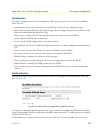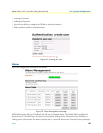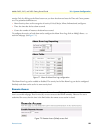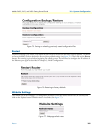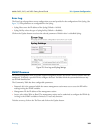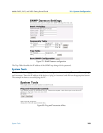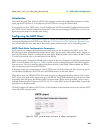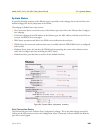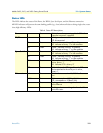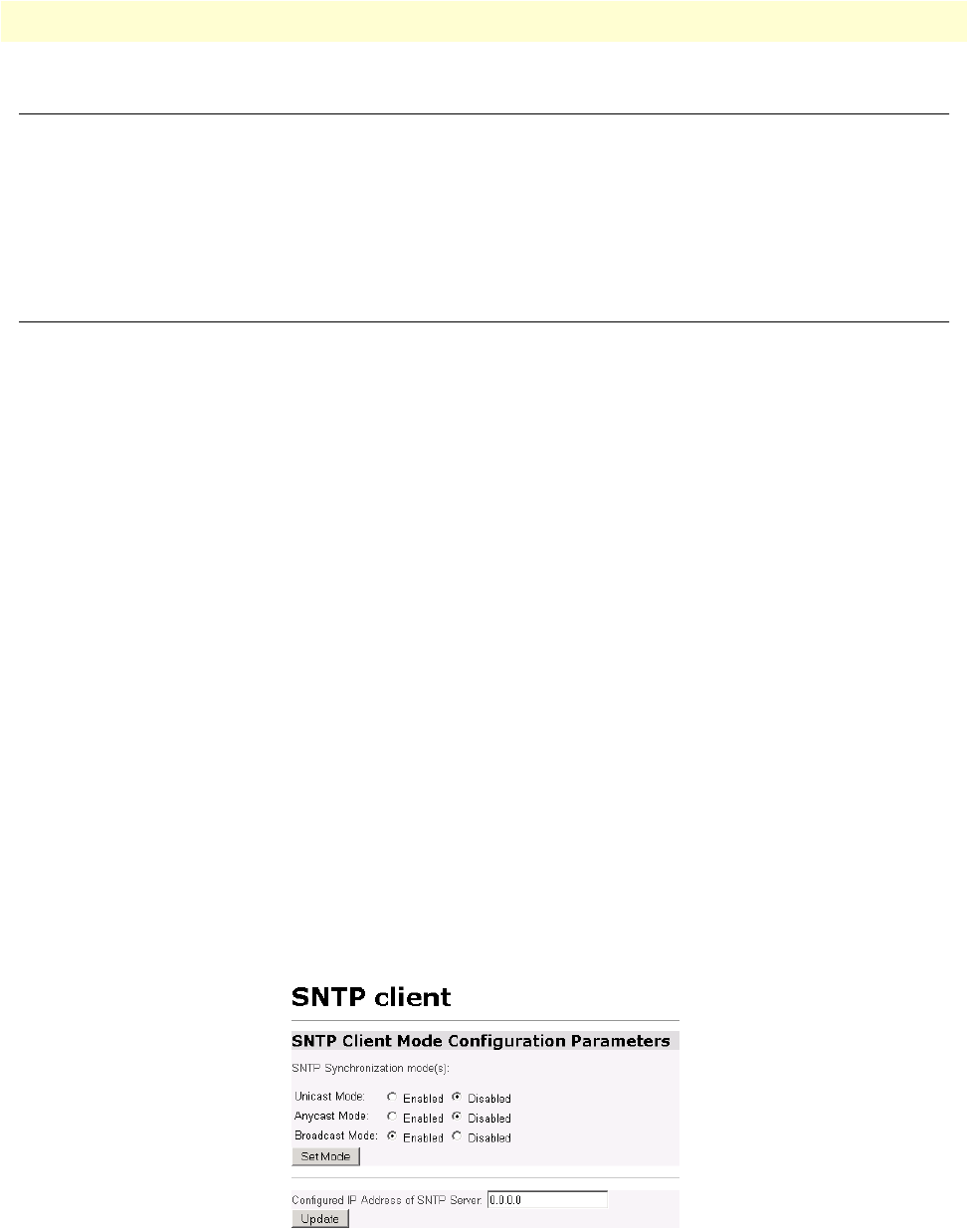
Introduction 105
Models 2603, 2621, and 2635 Getting Started Guide 11 • SNTP Client Configuration
Introduction
The Simple Network Time Protocol (SNTP) Client webpage contains the configurable parameters for either
setting up the SNTP client or, in the abscence of an SNTP server, setting the internal clock.
If you plan the use of an SNTP server, you will configure the ‘SNTP Client Mode Configuration Parameters’
and ‘SNTP Client General Configuration Parameters.’ If you are not accessing an SNTP server, you can con-
figure the system clock for a calendar clock setting.
Configuring the SNTP Client
The “SNTP Client Mode Configuration Parameters” section is for selecting the synchronization mode and
entering the IP address of the SNTP Server. With the “SNTP Client General Configuration Parameters” sec-
tion, you will select the time zone and set the transmit packet timeout period, retries, and polling period.
SNTP Client Mode Configuration Parameters
In this section you configure the synchronization mode and enter the IP address of the SNTP server. The
IPLink supports three synchronization modes: unicast mode, anycast mode, and broadcast mode. Unicast is a
point-to-point mode. Anycast is a multipoint-to-point mode. Broadcast mode is for use when the SNTP server
is on the local network, that is, the same subnet as the IPLink.
When Unicast mode is enabled, the IPLink sends a request to the server designated in the field containing the
SNTP server’s IP address. (See figure 81.) This is a point to point communication link. The IPLink requests
from one server. The server sends the timing information directly to the IPLink. When disabled, the IPLink
does not send any requests to any SNTP Server.
In Broadcast mode, the synchronization is with an SNTP server on the local network. Since routers do not for-
ward broadcast IP addresses, the SNTP server and IPLink must be on the same subnet.
With Anycast mode, the IPLink’s SNTP client sends a request to a designated broadcast address. One or more
SNTP servers may reply with a unicast message to the IPLink. The IPLink communicates with the server first
responding. After this point, the IPLink operates in unicast mode. When Anycast is enabled, Unicast is auto-
matically enabled and the IP address of 255.255.255.255 is in the SNTP server’s IP address field. Anycast takes
precedence over Broadcast mode.
The field Configured IP Address of SNTP Server: is the IP address of the dedicated unicast server that the SNTP
client will use for synchronization.
Figure 81. SNTP synchronization and server IP address configuration



